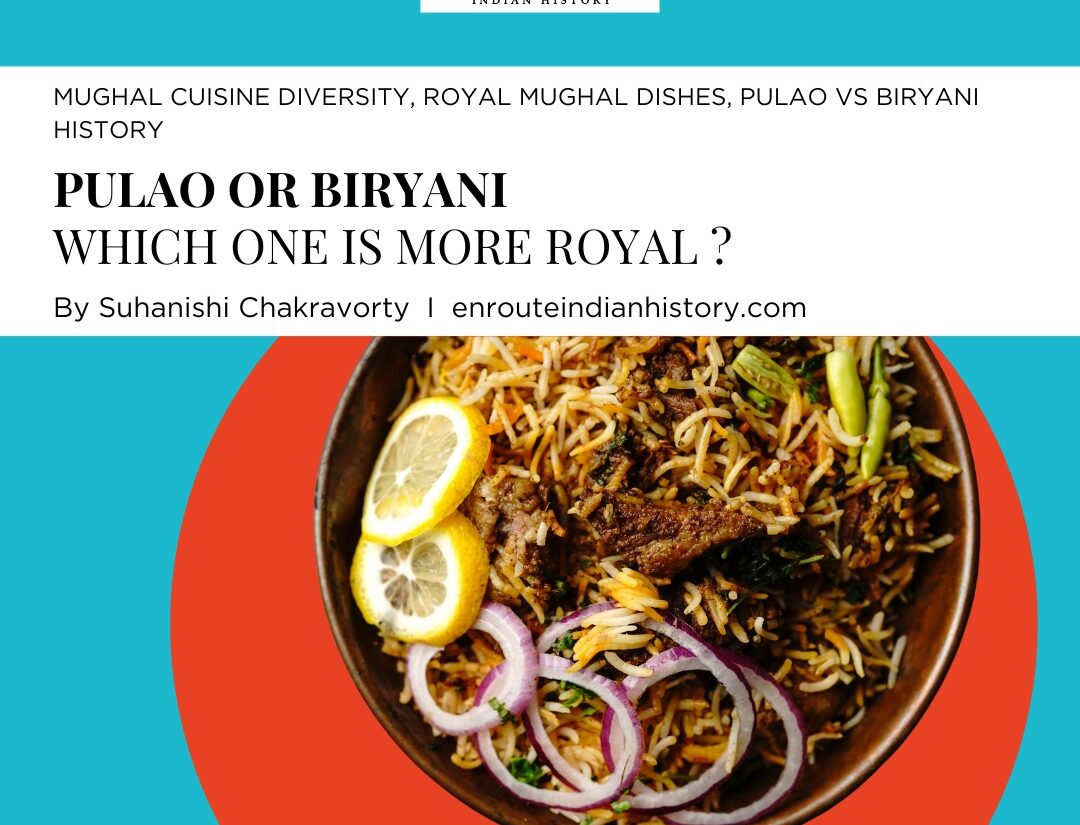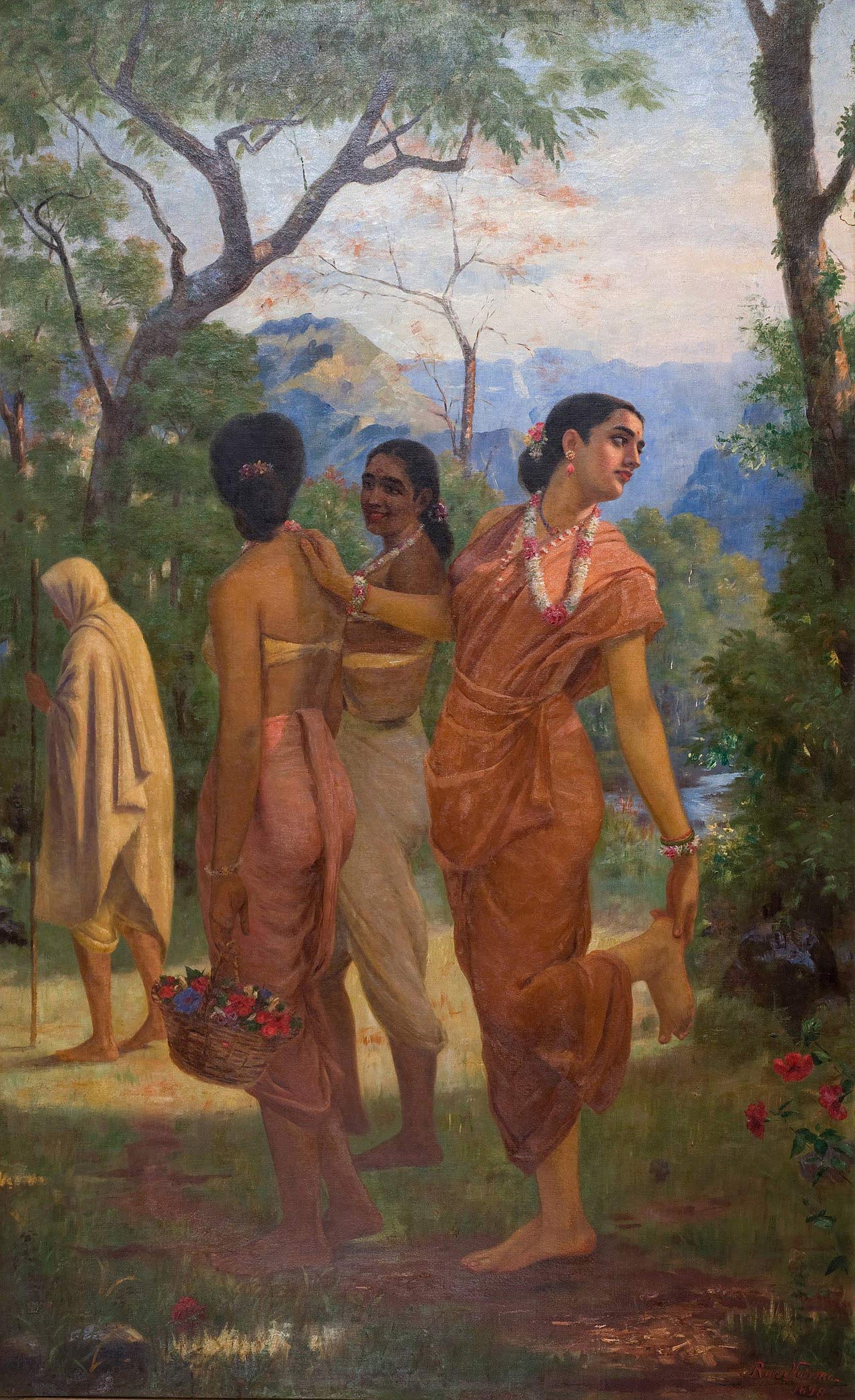
Royal cuisine of India is something that has a root for the country’s culture, identity and acceptance. Food has always been a language and it communicated through flavours, cooking style and resource choices. The royal kitchen in the Mughal era has been fortunate enough to receive influences as well as interpretations from the regional testimonies. Knowledgeable people with the gift of creativity often visited the nawabs to present a bit from their origin to win their trust and patronage. Pulao and Biriyani are creations that are the result of this cultural communication. From the king’s perspective, these were patronages on one side and political propaganda on the other. Additionally, it is also very important and necessary to identify how these recipes were hailing to the social and economic condition of the consumers. Royals might have a lot of money but did the poor also have the same? Factors like ‘time’ and ‘resources’ played a huge role in the formation of these recipes. We will try to identify this difference as we explore recipes and the stories associated with these.

(The navratan pulao, source: cookpad)
There is a popular story about one of the Nawabi Daal that somewhat explores the mechanism through which these communications between layman culture and royalty might have taken place (Vermani, 2022). According to one legend, once the Nawab of Lucknow was approached by a local khansama seeking patronage from the royalty. He claimed that if the king would give him one gold coin every day for a whole year then he would make something very exotic for him that would make him want to keep him in the court. The Nawab agreed to this.

(A meat shop in Lucknow, source: imsofsmithfield)
After a year when he visited the khansama, he was taken aback as there was nothing exotic but a bowl of humble Daal. ‘Daal’ or lentil soup particularly does not have a lot of respect as compared to the veteran meat dishes. The Nawab was disgusted as he might have expected at least some form of meat. So, he threw the pot away on a dead plant in the garden and ordered this khansama to be imprisoned (Indianexpress, 2024). A couple of days later one of the servants informed the nawab that the dead tree that soaked the whole of the daal that day had somehow bloomed unexpectedly. Upon confrontation with the khansamah in the prison, it came forward that those gold coins that were given to him for a whole year were melted and mixed in the ‘Daal’ that was presented to the Nawab. If by chance he had accepted the gift then he would have been gifted with youth and vitality that only gold could give. However, the khansama refused to make the ‘Daal’ once again.
This is a story that has many angles and some of them might not be very truthful with the reality. However, the communication and the sheer artistry of the Khansamas who had the confidence to change a man’s life with simple dishes is portrayed beautifully in this story. Pulao and Biriyani are perhaps some of those celebrated dishes that would confirm this practice and are also the dishes that gained popularity and define royal cooking as well as the Mughals even after five years of their departure.
The single dish that has attained the maximum amount of popularity after Biriyani in post-independence India is Pulao or Pilaf. Yes, Biriyani has established itself as a school of Mughal and royal cuisine but in terms of age and the journey, Pulao is perhaps a parent. Historically speaking the Pulao originated in Persia. The maiden name of the dish being ‘Polou’ or ‘Palav’, it travelled through the silk route in two directions. The first one reached Greece, Europe through Turkey and the second trail reached India through Afganistan, Pakistan. The trace did not stop in India though. It kept on travelling to China and Nepal where it met with its original Himalayan flavors again but in a slightly different way (Srinivas, 2011).
By looking at three different Pulao recipes we will be able to identify some of the various adaptions of the dish, particularly India.
The Navratan Pulao: As the name suggests it is a pulao that is supposed to have nine gems or ‘ratan’. By looking at the history we find a striking similarity of the number nine in Akbar’s court. There would be a team of nine people in an army to look at various factors. There would be a total of nine counsellors in the court who would guide the king to make decisions. Similarly, nine vegetables and/or dry fruits and nuts adorn this dish beautifully. This is a very simple rice preparation with mostly vegetarian ingredients which is a very rare event when talking about royal dishes. However, as the whole event of ‘pulao’ crashed in the Indian subcontinent which is famous for being an absolute expert when dealing with vegetables and spices this particular variant of pulao must have originated.
Yakhni Pulao: This pulao has become a common household name by the twenty-first century. Originally born in the Northern Part of Kashmir the pulao is a combination of slow-cooked red meat, flavorful rice and very light but strong spices. The basic characteristic that differentiates the pulao from others is the method of creating the ‘yakhni’ or the broth of the meat in which the rice is then cooked. Another very special thing about the recipe is that none of the ingredients or their treatment is supposed to add colour to the recipe. An experienced cook would know how much browning of the onions is to be done or how much usage of turmeric and other spices would retain the flavour but not mark its presence in the entire dish.

(Yakhni pulao, source: women’s corner)
Masala Pulao: This is particularly very much of a new dish that currently predominates in the streets of Lucknow. This is one of the many children of the royal pulao who adorned the golden plates once. It is common knowledge that the pulao got itself some spices and flavorful rice as it entered India. The management of the sourness with curd is also an Indian signature. It replaces the previous utilization of lemons and lime. The masala pulao is almost like that one sabzi our mothers make just with rice. Tempering the oil with a little bit of ghee (clarified butter), (which is in contrast with the traditional pulao recipes where the entire cooking would happen on ghee) seasoning it with some simple spices like cumin and fennel seeds then frying the vegetables in it and then cooking the rice in plain water (instead of saffron milk or meat stock). Then it is garnished with coriander leaves.
Tava Pulao: This is a dish which is a further more adapted version of the royal people for the hard-working men today. Tava or the flat pan is used extensively in Maharashtrian street food (Smith, 2020). The origin of Tava Pulao is somewhat very close to the royal pulao which was a delicacy in the royal kitchen of the Maharajas. However, as the money decreased, the British captured the whole cultural growth but the tastebuds of the common man continued to struggle. Hence, now there is a pulao for everybody that is a staple. It is almost copying the elements of original pulao making in the Royal kitchen just that the staff and the workload have changed.
Kitchen system of the Mughal empire and how it has been adapted in some still-running kitchens
The history of the royal is very enchanting from every angle. As the royals (the Mughals and other dynasties) have been moving forward and exploring the already rich India the amalgamation of people of the country kept on being an addition to the royalty. Just like the story about the gold ‘Daal’ the management of different types of food in the kitchen was henceforth done by special people, particularly designated ones. Some were brought with the army from the Middle Eastern countries while others were picked from the native localities. These people with already special talents and skills for different types of kitchen artistry further flourished as skilled artists under the king’s patronage. The economic stability and the patronage of a good king have helped a lot of poor artists regain their confidence in the kitchen. In these kitchens, their unique creations and contributions are now feathers on the hat.

(The poorman’s biriyani, source: scoopwhoop)
Traditionally, the same person in the kitchen would not make pulao and sherbet. The art of bread making flourished in the Middle Eastern countries before they turned into flat rates. Hence, it is quite obvious that each food would be prepared by separate people. The method of slow cooking gained popularity but it is something that could not be mastered by all (Livemint, 2022). On the other hand, sherbet making requires understanding the exact amounts of sweetness, sour and freshness. However, there is a concept of a head cook in the royal kitchen as well, similar to the current kitchens of the sovereign hotels today. This is a man with over forty years of experience in the kitchen who has experience in all the types of food that are to be cooked. The rest of the positions were likely filled with silent yet expert people who would hold a monopoly in the food they were making. The job of the bread maker is to make breads only and as he gains more reputation over the years and empire’s praise, he will cease to lay his hands on anything else.
But what about our beloved Biriyani?
Yes, it is quite difficult to accept the fact but Biriyani is a delicacy that was created for the poor men and not for the royalty (Ved, 2019). However, looking at the preparation style of the Yakhni Pulao it is difficult to not get reminded of the Lucknow Biriyani popular today. The Biriyani is a delicacy today but essentially the dish has been created for the soldiers who would need a wholesome, quick and less spicy version of meat and rice cooked together. The fundamentals of the Biriyani are the same. However, today in three distinct schools of Biriyani we find slight differences in regional requirements but the major management of the cuisine is more or less the same. Looking at Biriyani we find it to be very simple yet elegant and survived through the test of times. This is probably a much more saintly version of the rigorously prepared pulao that has celebrated elegance, royalty, wealth, spices and colours while Biriyani is simple meal with meat and rice that was and still is hugely popular as a common man’s dish (Indianexpress, 2024). Hence, biriyani will be in our hearts but we cannot really ignore the royalness of pulao and it’s glorious journey from the past as an Indian, can we?
References
Bbc, (2016) From Iran to India: The journey and evolution of biriyani (2016) BBC News. BBC. Available at: https://www.bbc.com/news/world-asia-india-36423412 (Accessed: 4 June 2024).
Indianexpress, (2024) Pulao vs. Biryani: Chef Kunal Kapur decodes the distinction between the dishes (2024) The Indian Express. Available at: https://indianexpress.com/article/lifestyle/food-wine/pulao-biryani-difference-origin-cooking-chef-kunal-kapur-recipe-9185738/ (Accessed: 4 June 2024).
Livemint, (2022). The secrets of India’s royal kitchens (2022) Mintlounge. Available at: https://lifestyle.livemint.com/news/big-story/the-secrets-of-india-s-royal-kitchens-111662641036277.html (Accessed: 4 June 2024).
Smith, R. V. (2020) Tales from the Mughal kitchen recounted by cooks of Matia Mahal, The Hindu. Available at: https://www.thehindu.com/society/history-and-culture/tales-from-the-mughal-kitchen-recounted-by-cooks-of-matia-mahal/article31330900.ece (Accessed: 4 June 2024).
Srinivas, T (2011). Exploring Indian culture through food Available at: https://www.asianstudies.org/wp-content/uploads/exploring-indian-culture-through-food.pdf (Accessed: 4 June 2024).
Ved, S. (2019) You can now cook from Emperor Shah Jahan’s original royal cookbook, Vogue India. Vogue India. Available at: https://www.vogue.in/culture-and-living/content/the-mughal-feast-royal-recipes-shah-jahan-cookbook (Accessed: 4 June 2024).
Vermani, N. (2022) From the cauldrons of history: labour services at Mughal dining and kitchen spaces, South Asian History and Culture. Available at: https://www.academia.edu/77087225/From_the_cauldrons_of_history_labour_services_at_Mughal_dining_and_kitchen_spaces (Accessed: 4 June 2024).




















